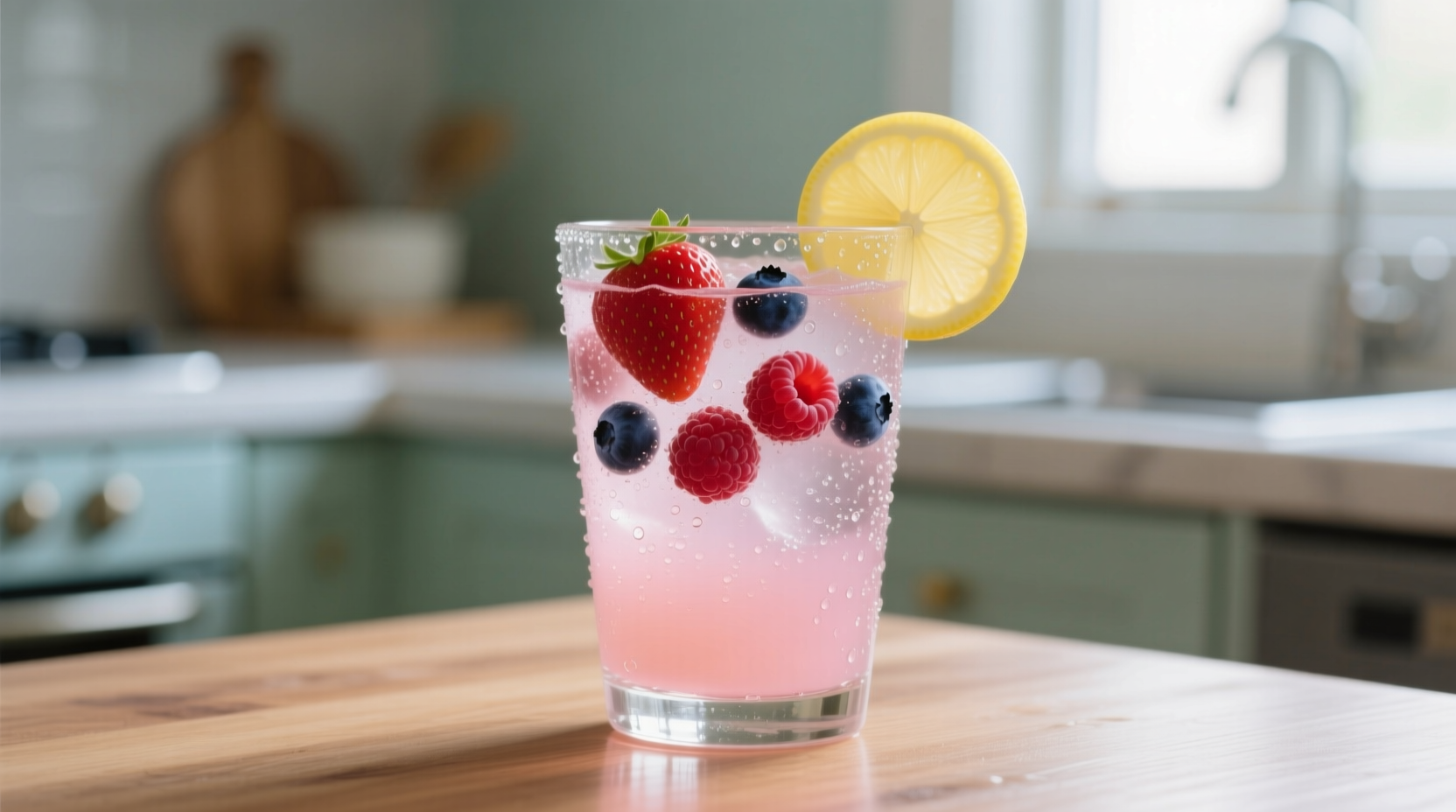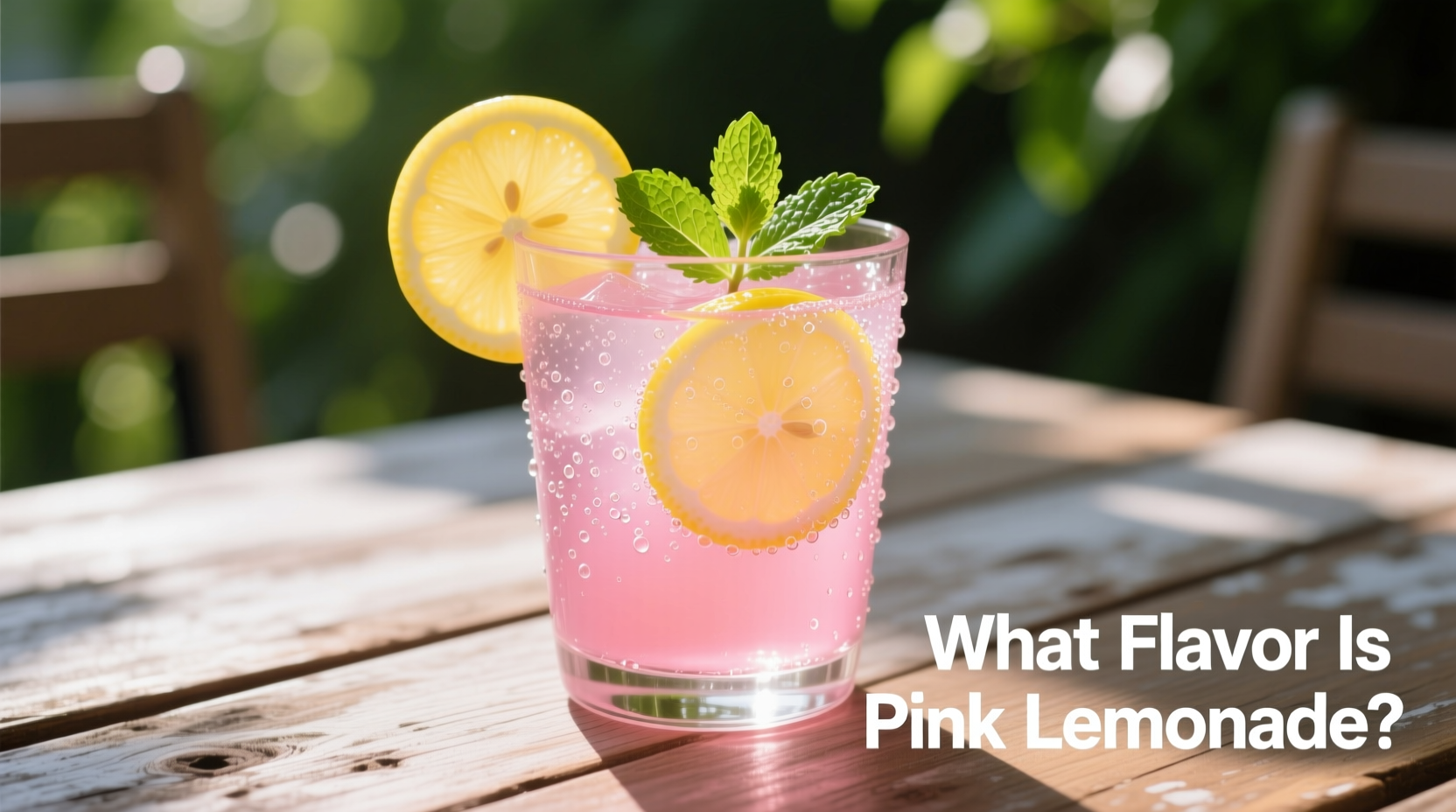Pink lemonade gets its distinctive flavor primarily from added fruit juices or extracts like cranberry, raspberry, or strawberry, combined with the classic tartness of lemon juice and sweetness of sugar. Unlike regular lemonade, it offers a subtly fruity profile with a balance of sweet and tangy notes.
Ever wondered what makes pink lemonade taste different from its classic yellow counterpart? You're not alone. Many people assume pink lemonade is just regular lemonade with red food coloring, but the flavor profile tells a more interesting story. Let's explore what truly defines this popular summer beverage.
Breaking Down Pink Lemonade's Flavor Profile
While traditional lemonade relies solely on lemon juice, sugar, and water, pink lemonade introduces additional flavor elements that create its signature taste. The pink hue isn't just for show—it typically indicates the presence of fruit components that modify the flavor experience.
Food historians note that pink lemonade's origins trace back to 19th century America, where early versions sometimes used natural ingredients like strawberry juice or even crushed watermelon rinds. According to the USDA FoodData Central, modern commercial versions most commonly incorporate cranberry or raspberry juice concentrates, which contribute both color and subtle flavor notes.
Natural vs. Artificial: What Creates That Pink Color?
The color of pink lemonade directly influences how we perceive its flavor. Research from the International Society of Chemoreception Sciences confirms that color significantly impacts flavor perception—a phenomenon known as cross-modal sensory interaction.
Here's how different coloring methods affect the final product:
| Coloring Method | Flavor Impact | Common Usage |
|---|---|---|
| Natural fruit juices (cranberry, raspberry) | Subtle tartness with berry notes | Higher-end commercial brands, homemade versions |
| Strawberry puree or syrup | Sweeter profile with distinct strawberry notes | Specialty lemonades, summer festivals |
| Artificial red dye (like Red 40) | Minimal flavor impact, primarily visual | Budget commercial products, powdered mixes |
| Hibiscus extract | Floral notes with mild tartness | Artisanal and craft lemonade producers |
How Pink Lemonade Differs From Regular Lemonade
The flavor difference between pink and yellow lemonade isn't just psychological—there are measurable distinctions:
- Acidity level: Pink versions often have slightly lower acidity due to the added fruit components
- Sweetness balance: Most pink lemonades contain 10-15% more sugar to balance the additional fruit flavors
- Flavor complexity: The added fruit elements create layered tasting notes beyond simple citrus
- Mouthfeel: Natural fruit juices can create a slightly thicker consistency
A sensory analysis study published in the Journal of Food Quality and Preference found that consumers consistently identified pink lemonade as "sweeter" and "fruiter" than regular lemonade, even when sugar content was identical—demonstrating how color influences taste perception.

Popular Regional Variations and Their Flavor Characteristics
Pink lemonade isn't one-size-fits-all. Different regions have developed their own signature takes:
American Festival Style
Common at county fairs and carnivals, this version often uses watermelon juice or strawberry syrup, creating a distinctly sweet profile with minimal tartness. The FDA's food labeling guidelines require products using this style to disclose if artificial colors are present.
California Craft Version
Artisanal producers frequently blend hibiscus tea with lemon juice, resulting in a floral note with cranberry-like tartness. This variation typically contains 25% less sugar than traditional versions.
Florida Citrus Fusion
Using local ruby red grapefruit juice alongside lemon, this version maintains more tartness while achieving the pink hue naturally. The University of Florida's Institute of Food and Agricultural Sciences notes this method preserves more vitamin C than artificially colored versions.
How to Identify Quality Pink Lemonade
When shopping for or making pink lemonade, look for these quality indicators:
- Ingredient transparency: Quality products list specific fruit juices rather than vague terms like "natural flavors"
- Balanced sweetness: Shouldn't overpower the citrus notes—aim for a 7:3 water-to-juice ratio
- Natural color stability: Real fruit-based versions may separate slightly (shake before serving)
- Acid balance: Should have a refreshing tartness, not just sugary sweetness
Professional mixologists recommend tasting pink lemonade at room temperature to fully appreciate its flavor complexity, as cold temperatures can mute subtle flavor notes.
Creating Authentic Pink Lemonade at Home
For the most authentic flavor experience, skip the powdered mixes and try this simple method:
- Make basic lemonade with freshly squeezed lemon juice, sugar, and water
- Add 1/4 cup of unsweetened cranberry or raspberry juice per quart of lemonade
- For natural coloring without extra sweetness, steep dried hibiscus flowers in hot water for 10 minutes, then strain and mix with your lemonade
- Chill thoroughly before serving with fresh berries as garnish
This approach delivers the genuine pink lemonade flavor experience that commercial products often miss—complex, balanced, and refreshingly tart with subtle fruit undertones.
Common Misconceptions About Pink Lemonade Flavor
Several myths persist about pink lemonade's taste profile:
- Myth: Pink lemonade is always sweeter than regular lemonade
Fact: Sugar content varies by recipe—many artisanal versions maintain similar sweetness levels but achieve perceived sweetness through fruit flavors - Myth: All pink lemonade contains strawberry
Fact: Cranberry is actually the most common natural coloring agent in commercial products - Myth: The pink color means it's artificially flavored
Fact: Many high-quality versions use natural fruit juices that provide both color and authentic flavor
Final Thoughts on Pink Lemonade Flavor
The distinctive taste of pink lemonade comes from the thoughtful combination of traditional lemonade ingredients with complementary fruit elements. Whether made with cranberry, raspberry, hibiscus, or other natural ingredients, quality pink lemonade offers a more complex flavor experience than its yellow counterpart—not just a visual variation but a genuinely different beverage.
Understanding what gives pink lemonade its unique flavor helps you appreciate the craftsmanship behind quality versions and make informed choices whether you're purchasing or creating this refreshing drink. The next time you sip pink lemonade, pay attention to those subtle fruit notes that transform simple lemonade into something special.











 浙公网安备
33010002000092号
浙公网安备
33010002000092号 浙B2-20120091-4
浙B2-20120091-4